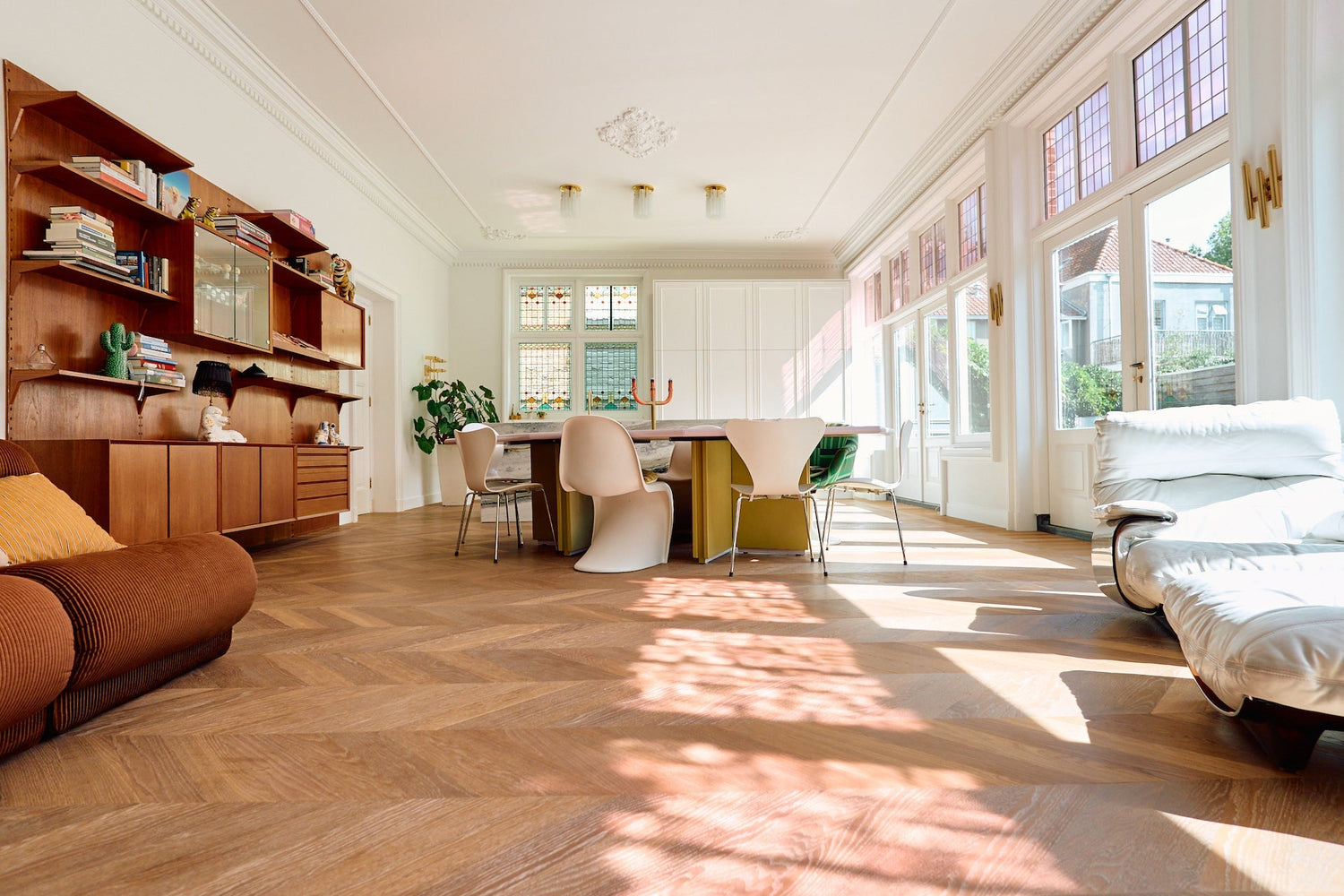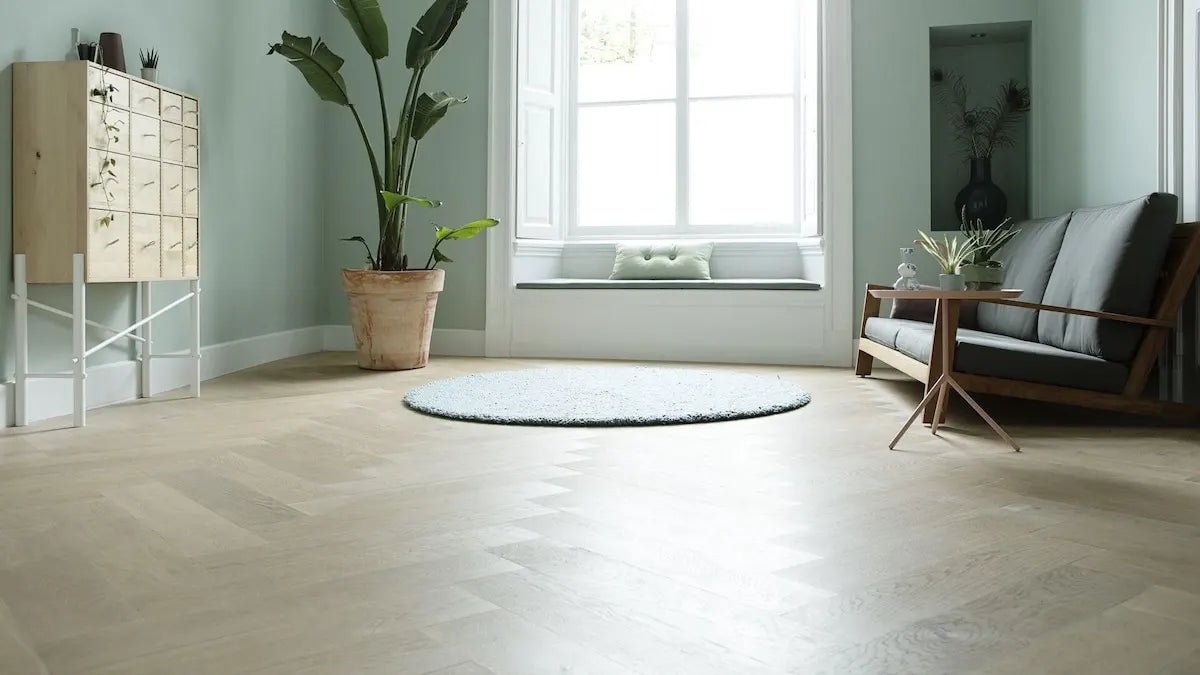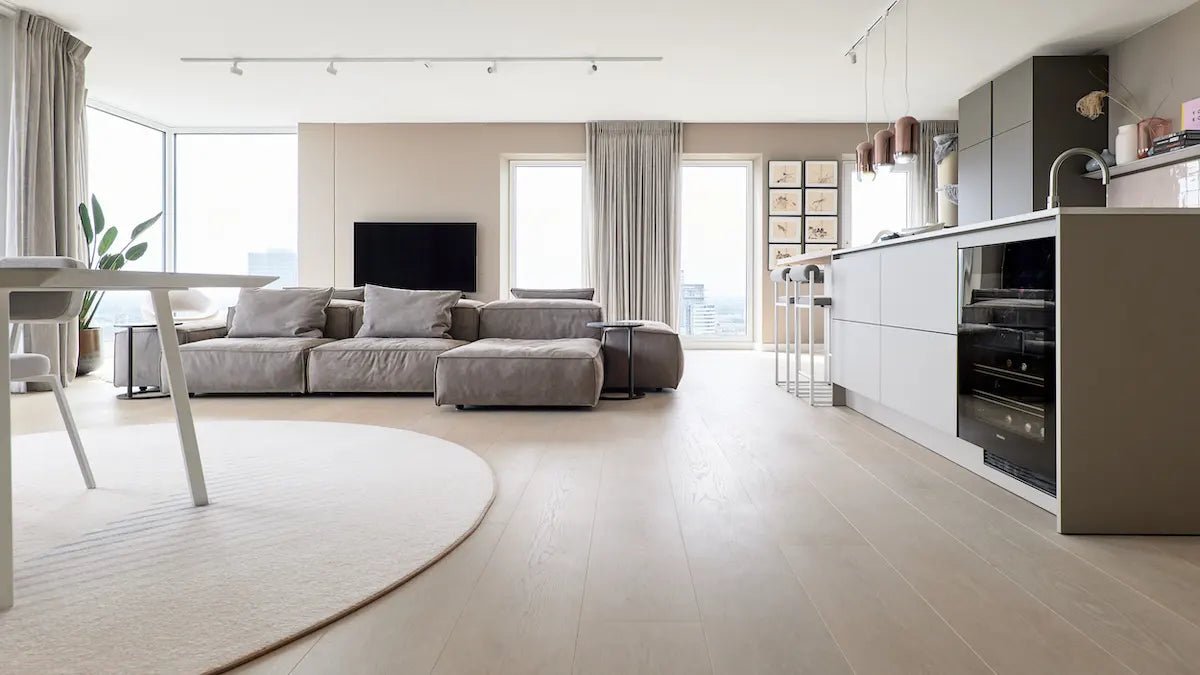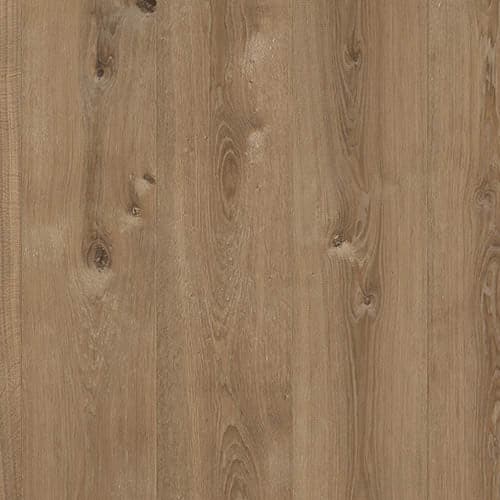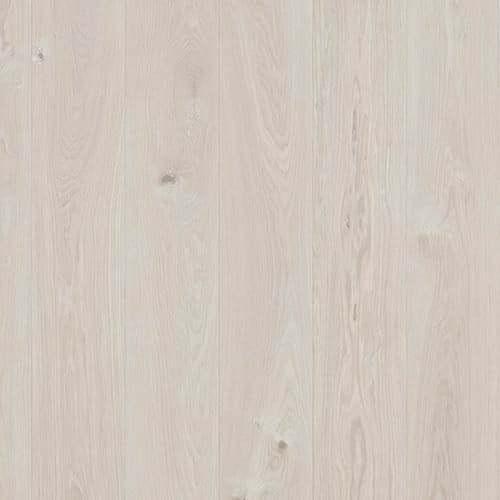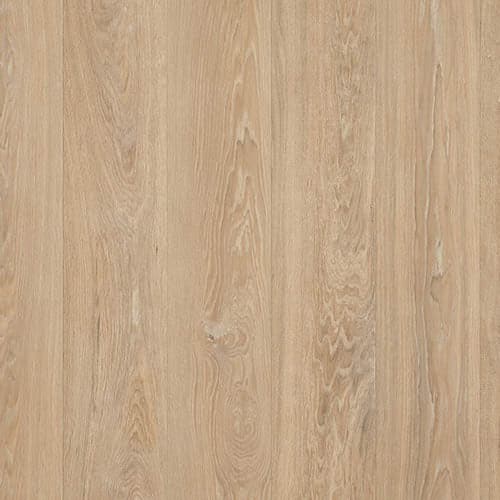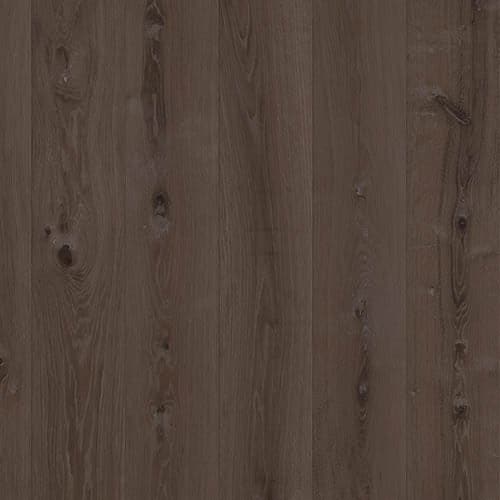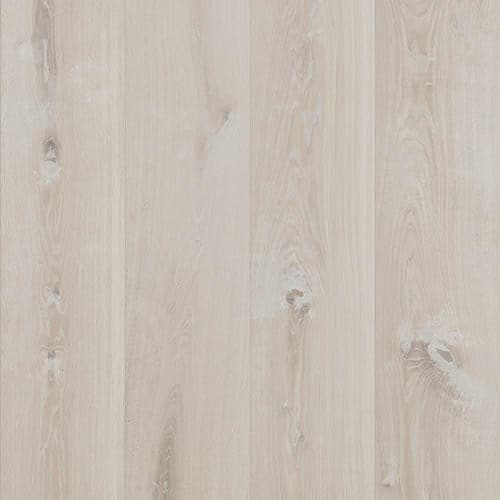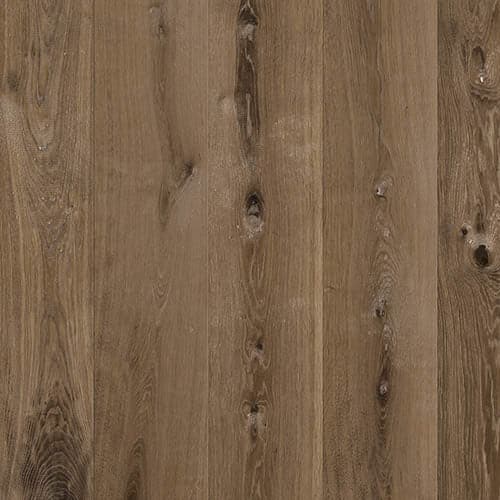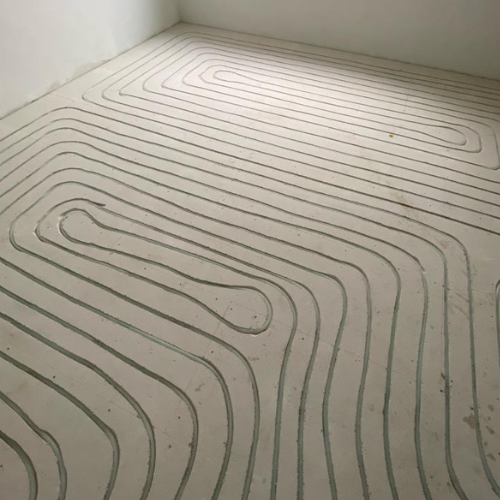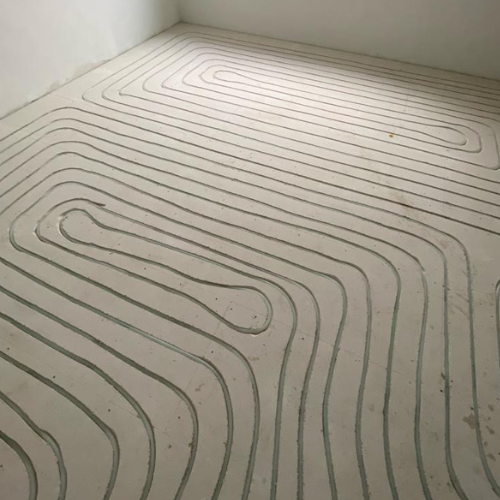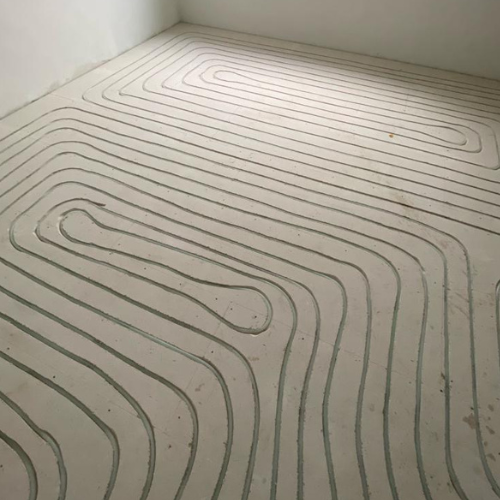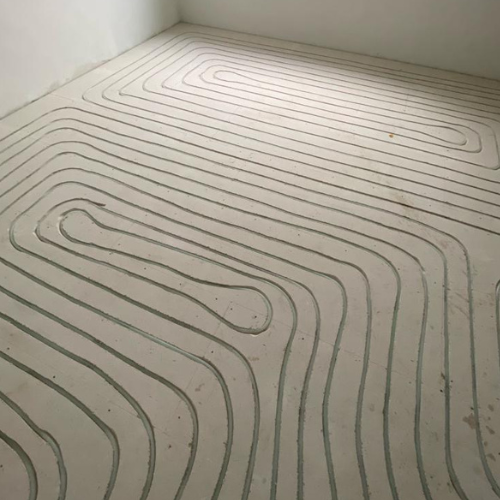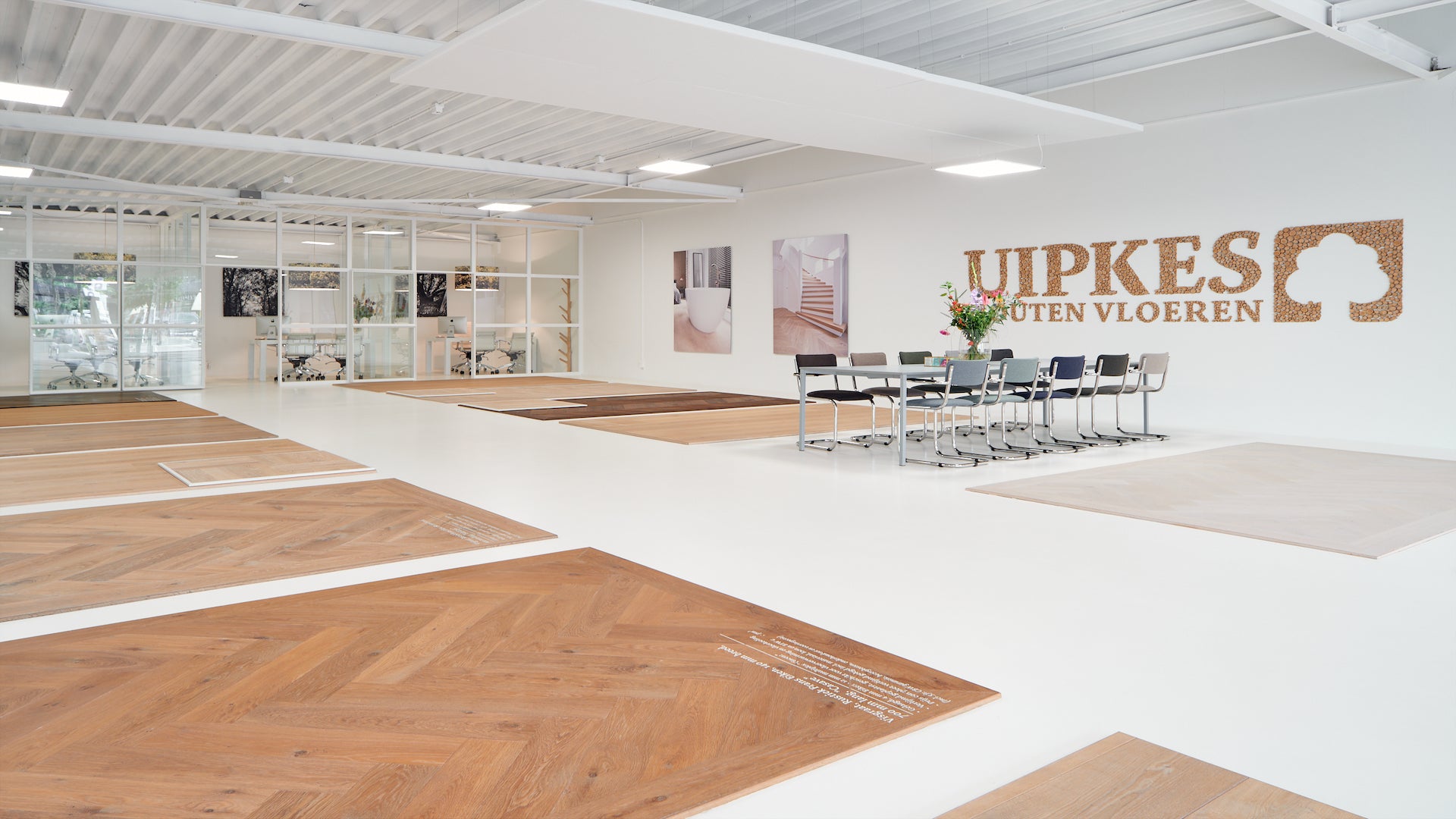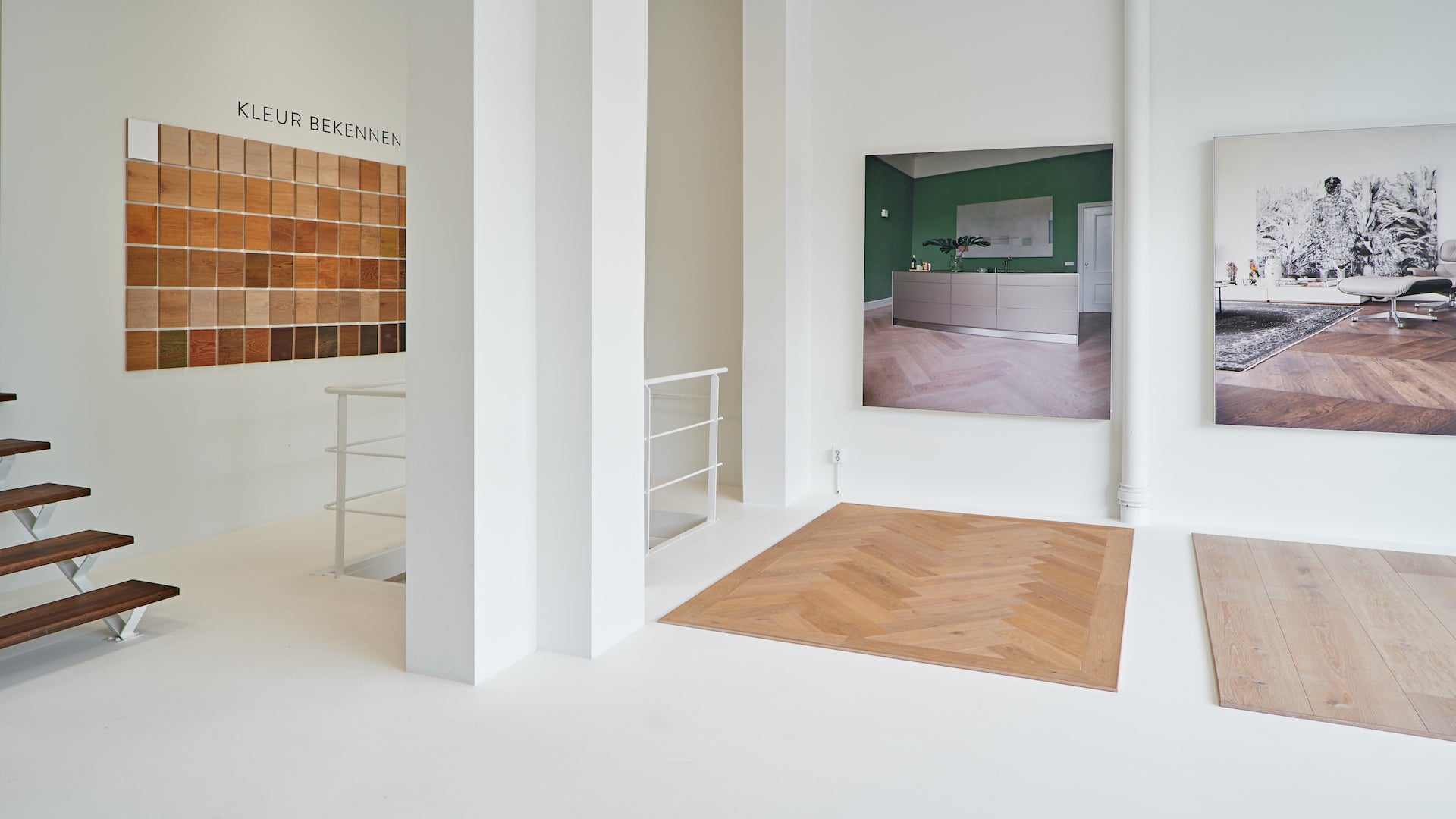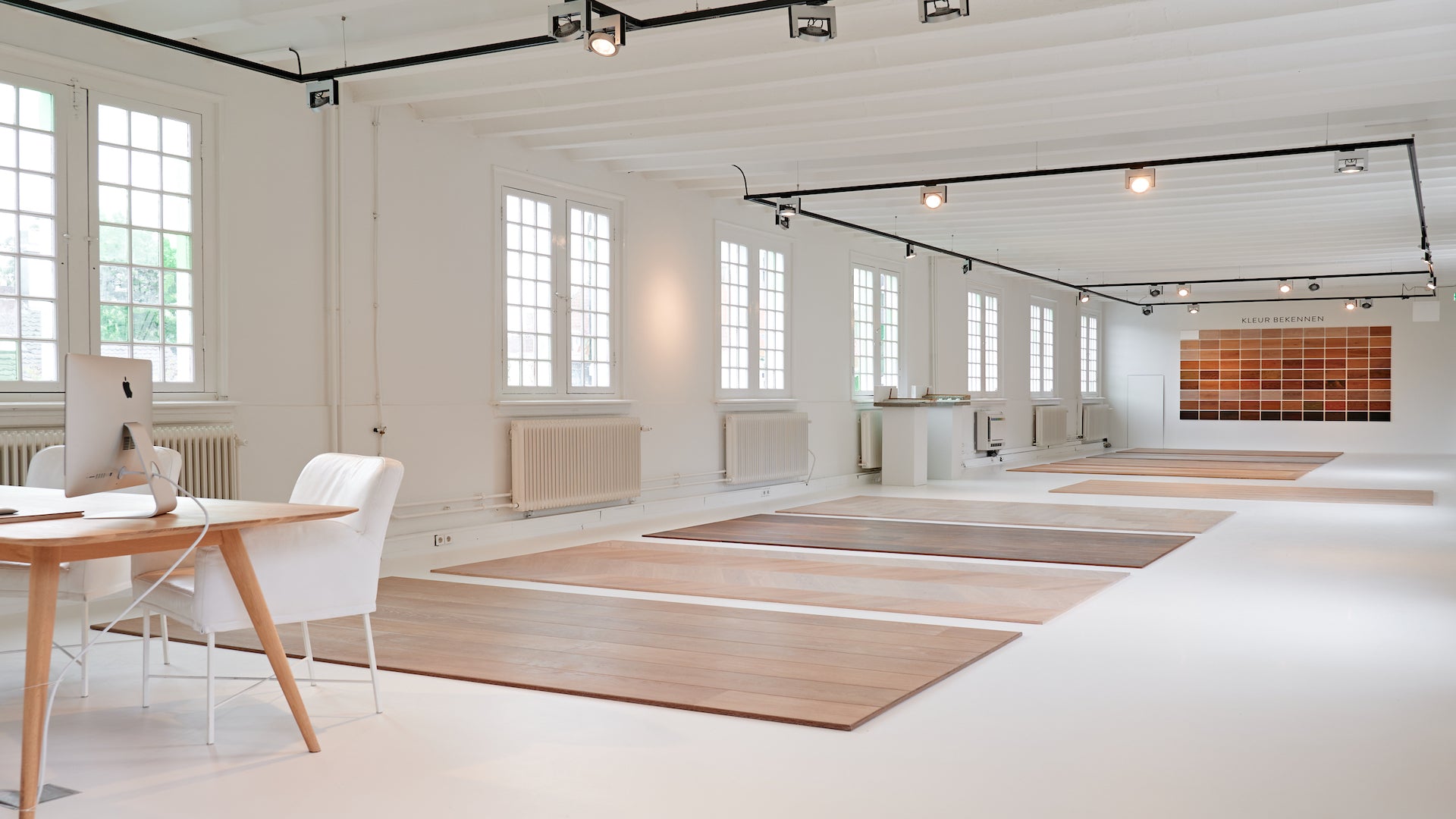Freesvloer vloerverwarming onder je houten vloer
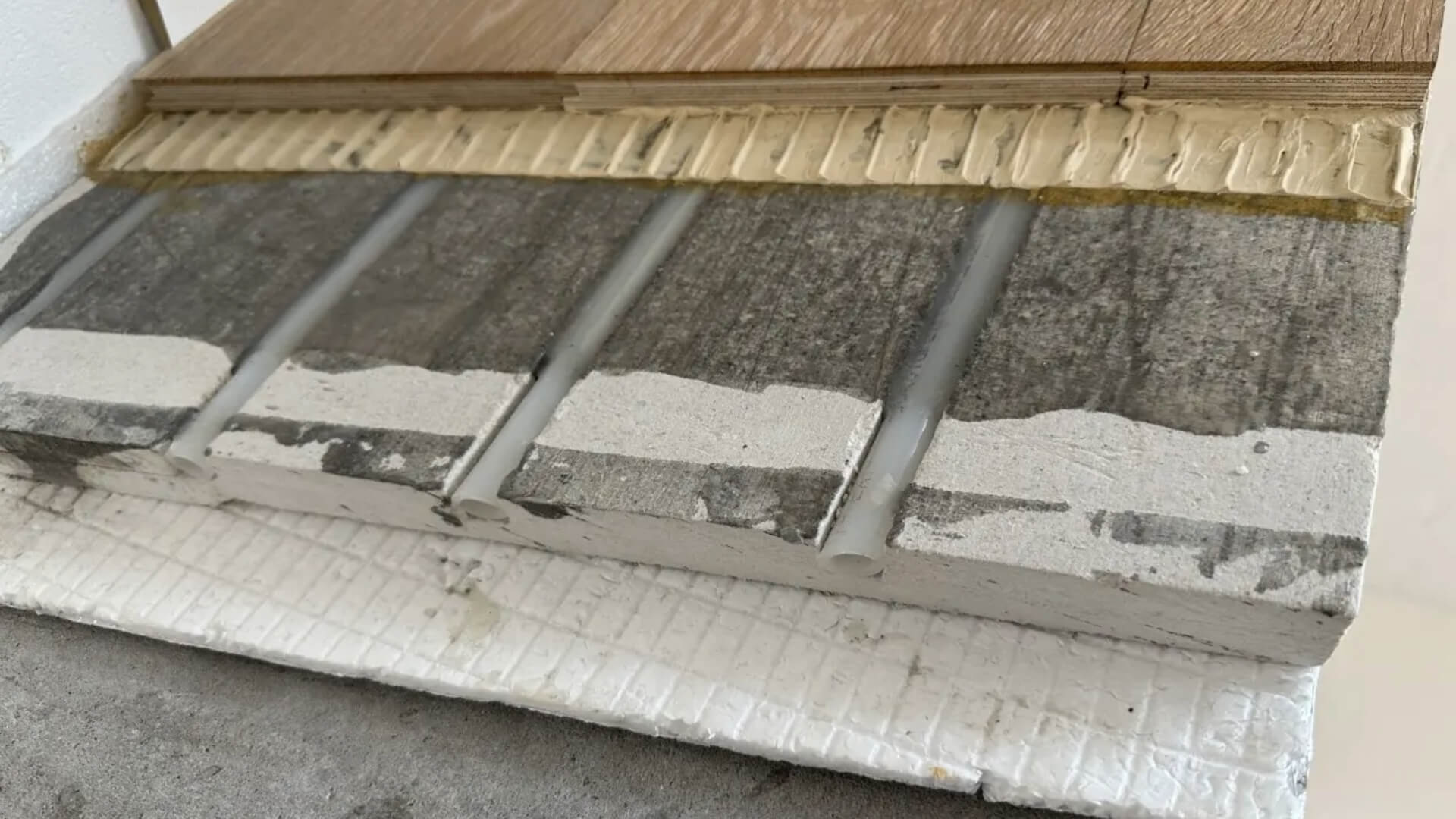
Bezoek de showroom
The milled floor is popular. These mainly occur in renovated homes or serially built homes where underfloor heating is not prescribed. Many people therefore opt for underfloor heating at a later date. Slots are milled in the existing screed floor, which can consist of different materials, such as sand cement, tiles or cast floors. underfloor heating pipes are pressed into these slots. The pipes are placed down and then the slots are closed with cement or epoxy/PU bonded materials. The engineered wooden floor is installed over this.
-
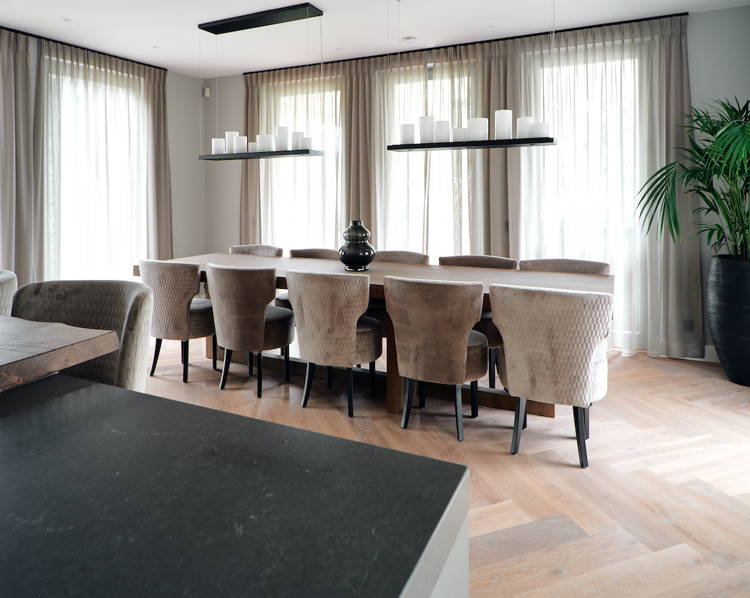
-
Advantages milled floor underfloor heating
The advantage of milling is that you do not have to deal with long drying times, unlike a wet construction underfloor heating system. The floors can usually be milled in a day or several days. In addition, you do not lose any construction height with this underfloor heating system. The pipes are placed in the existing floor on which the wooden floor can be installed.
The low-dust milling machine makes it a "clean" way of working. Milling is possible in many different floor types:
- Sand cement; minimum thickness must be approximately 3 cm
- Anhydrite; minimum thickness must be approx. 3 cm
- Estrich floors ; such as Knauf Brio, Fermacell (make sure any screws have been removed beforehand)
- Decorative gravel floor
- Concrete subfloor; Please note that this often requires a stronger milling machine
- Existing tiled floors; This depends on how tight and sturdy the tiles are. These may possibly vibrate loose or break during milling. If this is the case, they should be removed and possibly leveled.
Bezoek de showroom
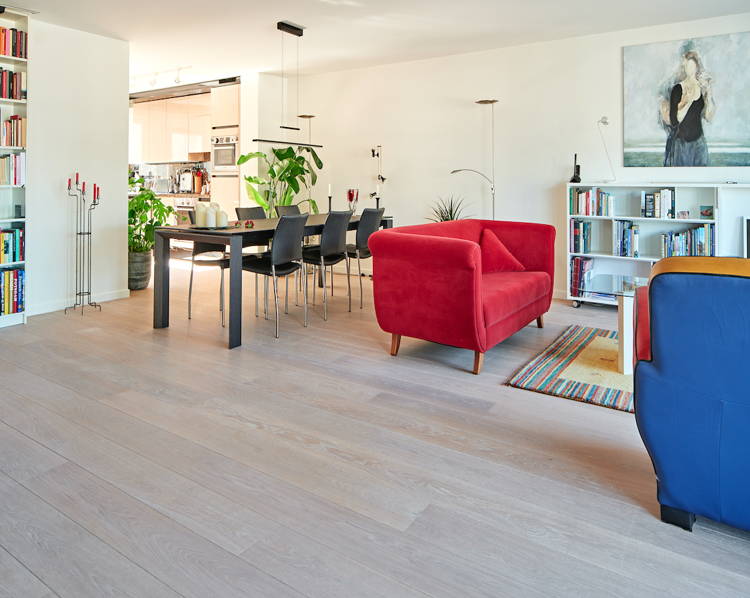
Applications milled floor underfloor heating
Milling is often used in existing residential construction , which already has a good finished floor. In addition, milled floor underfloor heating is often used when the floor cannot be raised much space due to doors and connections to other floors and the stairs.
-
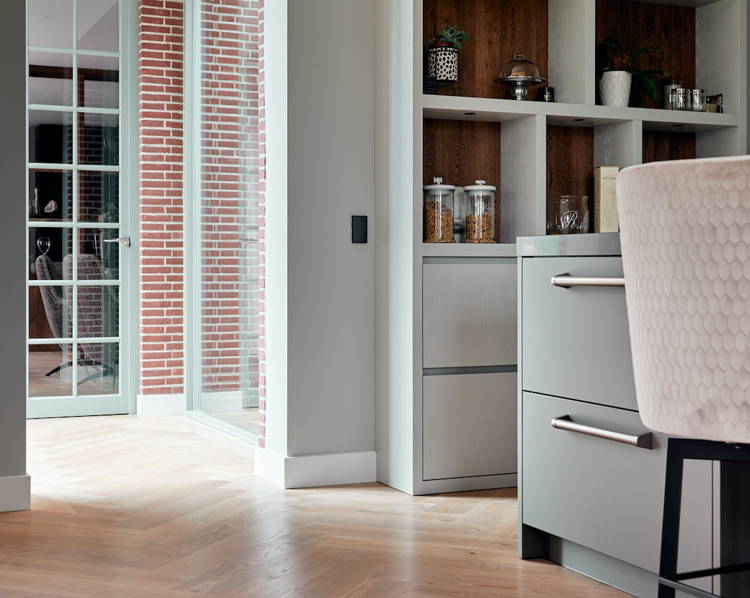
-
How does a milled floor underfloor heating system work?
The screed floor is divided into a number of 'groups' that are required for heating. On average, approximately 8-10m2 per group is used for heating.
Using a milling machine, which is low in dust, slots are cut in a so-called volute pattern, whereby a hot water (supply pipe) is placed next to a cold water (return pipe). This creates the optimal distribution of heat. For main heating, the pipes are placed approximately 10 cm apart.
-
Combine Infrees underfloor heating system with a wooden floor
A milled floor works excellently in combination with a wooden floor. Both as main or as additional heating. By using the right floor you will enjoy it for many years to come. In addition, wood is naturally a “warmer” floor, which gives a pleasant feeling even without underfloor heating . You can also have your underfloor heating installed by Uipkes, so that you have one point of contact for all work.
-
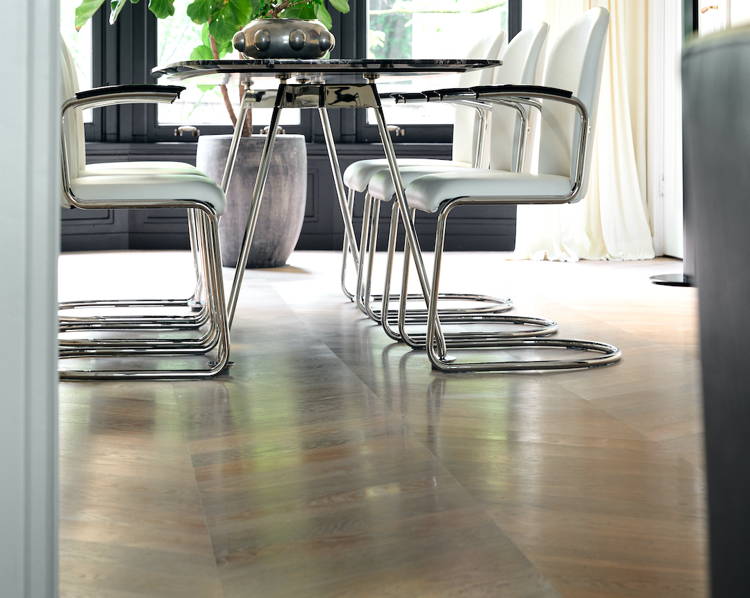
Magazine Vol inspiratie
Magazine aanvragen-
Wooden Floor Basalt Grey - Rustic French Oak - 26 cm Vincent
Regular price €125,00 EURRegular priceUnit price / per -
Wooden Floor Nepal White - Rustic A - 18 cm Floortje
Regular price €110,00 EURRegular priceUnit price / per -
Wooden Floor Mondriaan White - French Oak - 20 cm Vincent
Regular price €157,00 EURRegular priceUnit price / per -
Wooden Floor Chocolate Brown - Rustic French Oak - 18 cm Floortje
Regular price €96,00 EURRegular priceUnit price / per -
Wooden Floor Old Grey - Rustic French Oak - 24 cm Vincent
Regular price €119,00 EURRegular priceUnit price / per -
Wooden Floor Noble Black - Rustic French Oak - 22 cm Floortje
Regular price €100,00 EURRegular priceUnit price / per
Points of attention
- Minimum thickness of the finishing floor must be sufficient for the slots
- Preparation of distributor location by a plumber
- Seal the slots with epoxy-bonded material (permanently elastic), not with tile adhesive.
- Pipes must be completely covered.
- Removing screws when milling in Estrich floor (Fermacell)
- With tile floors, they must be well secured and sturdy. If you have any doubts about this, choose to remove the tile floor before milling in underfloor heating .
- Pipe distance for main heating 10 cm, pipe loops max. 8 m. Length.
- Ensure there is sufficient insulation under the subfloor to prevent a lot of heat from being lost.
-
Milling underfloor heating 1 group up to 9 m2
Regular price €1.486,00 EURRegular priceUnit price / per -
Milling underfloor heating 2 groups up to 18 m2
Regular price €1.786,00 EURRegular priceUnit price / per -
Milling underfloor heating 3 groups up to 27 m2
Regular price €2.365,00 EURRegular priceUnit price / per -
Milling underfloor heating 4 groups up to 36 m2
Regular price €2.867,00 EURRegular priceUnit price / per
Bezoek de showroom
Step-by-step plan milled floor underfloor heating
- Check whether the pipes are sufficiently deep and secure in the slots. At least 28mm below the top of the screed floor.
- Thoroughly remove dust from slots using an industrial vacuum cleaner.
- Fill pipes up to the top of the screed with a filler. Allow to dry for at least 16 hours.
- Apply primer to the subfloor with a foam roller, lambskin roller or spatula. Consumption approx. 80-200
- g/m². Drying time approx. 1 hour at 20 °C and max. 65% RH. Avoid puddle formation!
- Bonding wooden floors with wooden floor adhesive. Consumption approx. 1000 g/m². Apply with B11 toothing.
If the screed contains too high a moisture percentage (> 2.0%)
- Check whether the pipes are sufficiently deep and secure in the slots. At least 28 mm below the top of the screed floor.
- Thoroughly remove dust from trenches using an industrial vacuum cleaner.
- Fill pipes up to the top of the screed. Allow to dry for at least 12 hours. Apply next coat within 24 hours.
- Apply epoxy primer/moisture barrier as a sufficient covering layer with a fleece roller, consumption approx. 350-400 g/m². Drying time 12-16 hours. Apply the next layer within 24 hours.
- Glue wooden floors with a wooden floor adhesive. Consumption approx. 1000-1200 g/m². Apply with B11 toothing.
Frequently Asked Questions
What is a milled floor underfloor heating system?
A milled floor underfloor heating system refers to a method in which slots are milled into the existing floor and the heating pipes are placed in these slots. The slots are then covered with a finishing floor.
What are the advantages of a milled floor underfloor heating system?
Some advantages of a milled floor underfloor heating system are:
- Suitable for both new construction and renovation projects.
- Limited increase in floor height.
- No need to completely remove the existing floor.
- Faster installation time compared to other systems because there is no drying time.
What materials are needed for a milled floor underfloor heating system?
The materials required for a milled floor underfloor heating system may include:
- Heating pipes (usually plastic, such as PEX).
- Underfloor heating distributor (to regulate the water supply to the pipes).
- Fill material for gaps, use an epoxy-based agent when using a wooden floor.
- Finished floor (to cover the slots and serve as a floor finish).
- Possibly insulating material (to limit heat loss downwards).
Do I have to take the floor height into account when installing a milled floor heating system?
In general, a milled floor underfloor heating system results in a limited increase in floor height. However, it is important to check the specifications of the system and the finished floor to ensure that the floor height is within the desired limits.
How are the heating pipes installed in a milled floor heating system?
The heating pipes are placed in the milled slots using mounting clips or wire steel. The tubes are evenly distributed according to a predetermined pattern, such as a volute pattern or a meander pattern. After this, the slots are closed with a filler, use a product that is suitable for the desired floor finish.
Can a milled floor heating system be combined with other heating systems, such as radiators?
Yes, it is possible to combine a milled floor heating system with other heating systems, such as radiators. A multi-outlet heat distributor can be used to control the water supply to both the underfloor heating and radiators, depending on needs.
- Choosing a selection results in a full page refresh.
- Opens in a new window.



